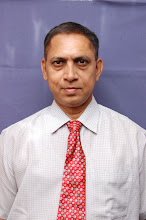Most of us enjoy the IPL season and the matches!
Time to enjoy the daily fix of nail-biting excitement. Time also to take a leaf
out of the book of one of the biggest stars of the IPL. The man they call AB de
Villiers!
There
is an interesting little story that AB shares in his autobiography, which holds
a valuable lesson for leaders. Even if you are not a cricket fan, it's a story
you must hear. A story of two men. De Villiers. And French.
AB says there were several people who had a
hand in his development as a cricketer. His parents, his coaches, and senior
cricketers notably Graeme Smith, Jacques Kallis and Mark Boucher - all of whom
had a strong influence on AB. And there was one other name in that list, not
quite as well known. Francois Geldenhuys. The man they called 'French'. AB says
that French was the guy who backed him when he was most in need. The man who
had a pivotal influence on AB's life and career. So what exactly did French do?
Flashback then to the year 2000. French was
captain of the North Transvaal team in a local inter-school tournament. AB was
in that team, and the coach had put him down to bat at No. 7. French spoke to
the coach and said AB should be given a chance to open the innings. The coach
agreed, even if somewhat reluctantly. AB grabbed the opportunity with both
hands, and scored a century. That hundred resulted in AB getting picked in the
South Africa Colts team. In addition, he then got picked for the South Africa
schools team a year later, and so on. And on.
This begs the question. Would AB have made
that kind of progress had French not spoken up? What might have happened had AB
been left to languish down the order? We will never know.
However, as AB himself says, what we do know
is that there are several exceptionally talented sportsmen and women out there
who never get to realize their full potential, who languishes in obscurity
simply because they don't get a chance to show off their skills and
capabilities. AB got his chance, because someone spoke up. And that made all
the difference.
That's true for sport. And for business and
life too. For every rising star, we hear of in the corporate world, there are
several others - equally talented, as capable - who unfortunately don't get a
chance to prove their worth. Success is not just about talent. It's about
talent and opportunity. When talent meets opportunity, history gets made.
If you think about it, you will see that your
own success, your achievements in life, is thanks to a mentor or a boss who
took a chance on you and gave you a break. A break that allowed you to show
what you were really all about. Maybe they made you a General Manager - even
when there were other more experienced candidates, and people were saying you were
not ready for it. Or perhaps someone promoted you out-of-turn to Vice President
to head a function or business, which you then rapidly grew. So even as you
take pride in your talents and your achievements, take a moment to thank the
men and women who gave you that opportunity.
Now it is your turn to return the favor. Take
a bet on raw talent. Bet on unripe fruit.
If you are a team leader secretly wishing you
had an AB de Villiers in your team, you need to pause and think. Maybe there is
already an AB in the team - but he or she hasn't got an opportunity to show
what he or she is capable of! Give him or her a chance, please. Don't focus
only on your established stars. Give talent an opportunity.
As
a leader - and star performer - you might wish you were an AB de Villiers:
scoring runs, dazzling fans and winning games. But really, you owe it to
yourself to be a French. Become the kind of person who gives the young ABs in
the team the opportunities to show their mettle.
As you sit back and watch an IPL game on your
TV screen, enjoy the fireworks from
A
B De Villiers. Nevertheless, spare a thought for French too. He made a
difference. He gave talent an opportunity.
You
should, too…
Have
a great day!
Be
blissful.
S.Sekar
